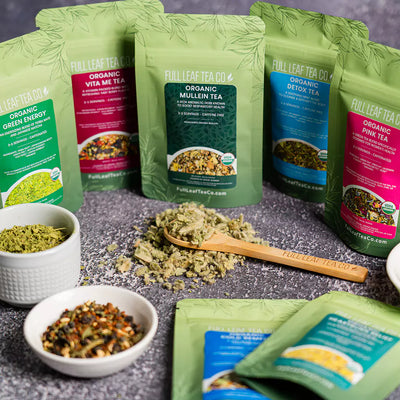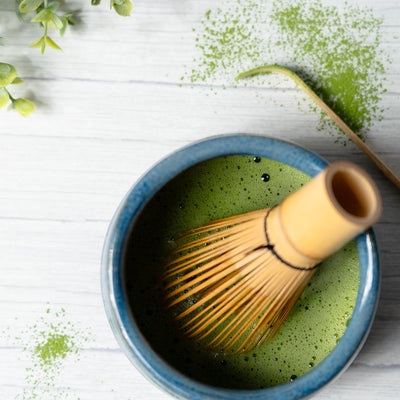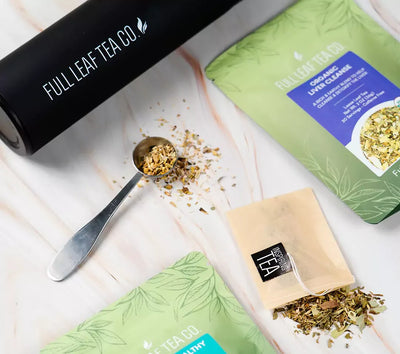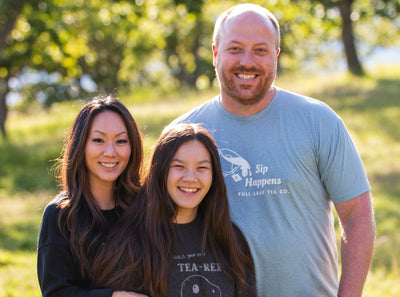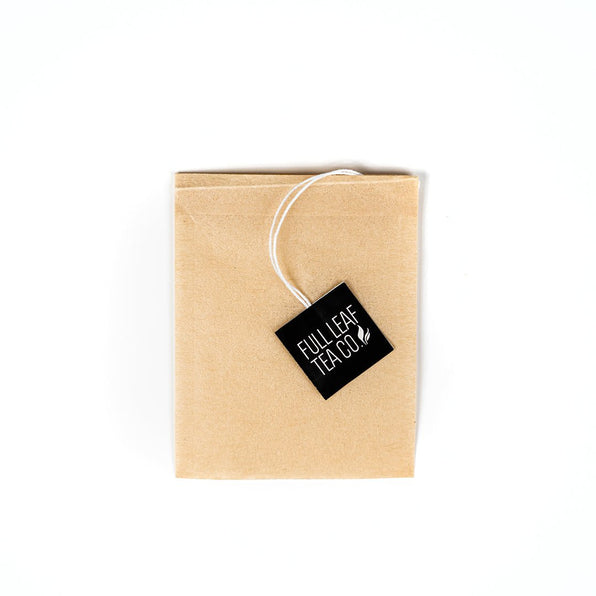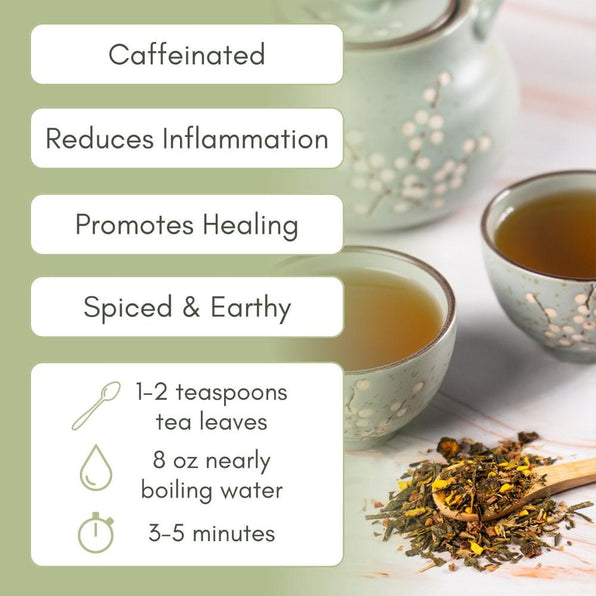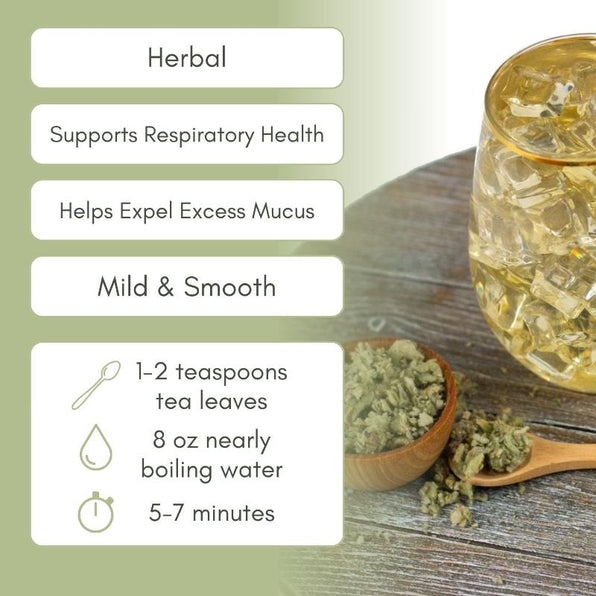
Brewing Tea
Brewing tea is a delightful ritual that has been practiced for centuries, and there are numerous methods to brew the perfect cup of tea. Whether you're a traditionalist or a modern tea enthusiast, there's a method that suits your taste. Let's explore some of the most popular ways of brewing tea, including using a tea press, tea bags, a tea infuser, and a tea pot.
1. Tea Press (French Press)
Brewing tea with a tea press or French press is a versatile and straightforward method that delivers a robust and flavorful cup. While these devices are typically associated with coffee, they are equally effective for brewing tea, especially when you want to enjoy a full-bodied infusion.
Preparing the Tea Leaves: To begin, measure the desired amount of tea leaves based on your taste preference and the size of your tea press. Typically, one teaspoon of tea leaves per cup of water is a good starting point. Place the tea leaves directly into the bottom of the press.
Heating Water: Heat fresh, filtered water to the appropriate temperature for your tea type. Different teas require different water temperatures when brewing tea, so it's crucial to use the correct one. Pour the hot water over the tea leaves in the press, ensuring they are fully submerged.
Steeping Time: Close the lid of the press but do not press down the plunger just yet. Let the tea leaves steep for the recommended time, which varies depending on the type of tea. Black teas usually require 3-5 minutes, while green teas may need 1-3 minutes. Herbal teas may require longer steeping when brewing tea.
Pressing and Serving: After the steeping time has passed, slowly press down the plunger to separate the tea leaves from the liquid. This action stops the steeping process when brewing tea, preventing over-extraction. Pour the brewed tea into your teacup and enjoy. If you prefer stronger tea, you can always adjust the steeping time or add more tea leaves when brewing your tea.
Versatility and Reuse: The advantage of using a tea press or French press for brewing tea lies in its versatility. If you are brewing tea in larger quantities for multiple servings, and the device is also great for making iced tea. Plus, like with brewing coffee, you can re-infuse the tea leaves for subsequent infusions, extracting different flavors with each brew.
In conclusion, brewing tea with a tea press or French press is a simple yet effective method that can yield a rich and satisfying cup of tea. It's a convenient option for both beginners and seasoned tea enthusiasts, offering versatility and the opportunity to experiment with different tea types and steeping times to tailor your tea-drinking experience to your liking.
2. Tea Bags
Brewing tea with tea bags is one of the most convenient and straightforward methods for enjoying a quick cup of your favorite brew.
To start brewing tea with Natural Paper Drawstring Tea Bags, bring fresh, cold water to a rolling boil, and choose a tea bag that matches your taste preference.
Place the selected tea bag into your teacup, ensuring it's fully submerged in the hot water.
Follow the recommended steeping time for the type of tea you're brewing, whether it's black, green, or herbal tea.
Once the tea has steeped to your liking, remove the tea bag and customize your tea with sweeteners, milk, or lemon as desired.
Brewing tea with tea bags is perfect for those moments when you crave a quick and flavorful tea without the need for extra equipment or extensive preparation.
3. Tea Infuser
Brewing tea with a tea infuser is a popular method that allows you to use loose-leaf tea and enjoy a more customizable and flavorful cup. Here's how to brew your tea with loose leaf tea infuser:
Selecting Your Loose-Leaf Tea for Brewing Tea: Begin the process of Brewing Tea with a tea infuser by carefully choosing your preferred loose-leaf tea. This style of tea offers a wide range of flavors and varieties, from black and green teas to herbal blends and exotic infusions. When measuring the appropriate amount of tea leaves for brewing , keep in mind that generally, one teaspoon of tea leaves per cup is a good starting point.
Boiling Water for Brewing Tea:
The next step is to heat fresh, filtered water to the correct temperature for your chosen tea. It's crucial to select the right water temperature, as different teas require different water temperatures to achieve the best flavor. Once you've heated the water, pour it into a teapot or a cup, ensuring that you have enough water to fully submerge the tea infuser. This attention to detail is key to achieving a successful process.
Loading the Infuser for Brewing Tea:
Now that you've prepared your loose-leaf tea and hot water for the tea, it's time to load the infuser. Place the measured tea leaves into the tea infuser's compartment, ensuring that you do not overfill it. Allowing the leaves to expand and release their flavors properly is vital to brewing your tea. Next, place the infuser into your teapot or cup with the hot water to initiate the steeping process.
Steeping Time in Brewing Tea:
Pay close attention to the steeping time. The steeping time varies based on the type of tea you're using. Generally, black teas require 3-5 minutes, green teas need 1-3 minutes, and herbal teas may vary in their steeping times. To avoid bitterness, it's advised to adhere to the specific steeping time recommendations.
Removing the Infuser After Brewing Tea:
Once the tea has steeped for the recommended time, carefully remove the tea infuser from your teapot or cup. Some tea infusers come with a lid or a drip tray, making it easy to set aside without making a mess after brewing.
Enjoying Your Tea After Brewing Tea:
Your freshly brewed tea is now ready to enjoy after the successful work you have put in! You can savor it as is or personalize it with sweeteners, milk, or other additives according to your taste preferences. Brewing Tea with a tea infuser offers the advantage of using high-quality loose-leaf tea while maintaining convenience and control over the steeping process. It's a favored method among tea connoisseurs and allows for a rich and customizable tea experience, ensuring that each cup is a unique reflection of your tea preferences while you enjoy it. Sip by Sip!
4. Tea Pot
Brewing tea in a teapot is a timeless tradition that enhances the tea-drinking experience. Whether you're using a classic porcelain pot, a modern glass teapot, or a traditional clay teapot, the process remains largely the same and offers unique advantages.
Selecting the Right Teapot: Choosing the right teapot is crucial. Porcelain and glass teapots are excellent choices for delicate teas like white or green tea because they don't retain flavors. Clay teapots, on the other hand, absorb the essence of the tea with each use, which can deepen the flavor over time. Each material brings its unique character to the brewing process.
Preheating the Teapot: To ensure an even brewing temperature, preheat the teapot by rinsing it with hot water and then discarding the water. This step prevents temperature fluctuations that could affect the tea's flavor while brewing your tea.
Measuring and Adding Tea Leaves: Measure the appropriate amount of tea leaves for your teapot's size and the number of cups you wish to brew. Generally, a good rule of thumb is one teaspoon of tea leaves per cup, but this may vary depending on the type of tea and personal preference. Place the tea leaves into the teapot's infuser or directly into the pot.
Boiling Water: Heat water to the correct temperature for your tea type. Different teas require different water temperatures, so consult the tea's packaging or guidelines. Pour the hot water into the teapot, ensuring that the leaves are fully submerged.
Steeping Time: The steeping time depends on the type of tea and your desired strength. Typically, black teas require 3-5 minutes, while green teas may need only 1-3 minutes. Herbal teas might require a longer steeping time. Remember that over-steeping can result in bitterness, so you may want to adjust the steeping time based on your taste preferences.
Serving: Once the tea has steeped, pour it into teacups, and enjoy. Some tea enthusiasts prefer to decant the entire teapot to prevent further steeping, while others prefer to use a tea strainer to catch the leaves as they pour.
Re-infusion: One of the joys of brewing tea in a teapot is the ability to re-infuse the leaves multiple times, extracting different nuances of flavor with each infusion. Simply add more hot water to the teapot and adjust the steeping time slightly for subsequent infusions.
Brewing tea in a teapot is not just a means to an end; it's a ritual that allows you to savor the entire process. The choice of teapot, the precision in water temperature, and the steeping time all play a role in crafting the perfect cup. Whether you're enjoying a quiet moment alone or sharing tea with friends, the teapot elevates the tea-drinking experience to an art form that can be appreciated by both novice and seasoned tea enthusiasts alike.
In essence, when you are brewing tea, the water serves as a medium for extracting the flavors, aromas, and beneficial compounds from the tea leaves or tea bag. The specific characteristics of your brewed tea, including taste, aroma, color, and strength, depend on various factors such as the type of tea, water temperature, and steeping time. It's this delicate interplay of water and tea that creates the wonderful beverage we all know and love.
Have fun creating your own little cup of happiness in which ever way you choose!

